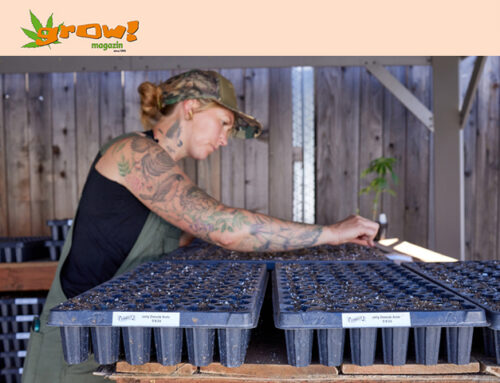7 best cannabis strains for hydroponic growing
7 best strains for hydroponic growing
While cannabis plants have been growing on the earth for millennia, modern techniques have propelled cannabis cultivation into a new era of efficiency, accuracy, and yields.
At first glance, hydroponic grows may look like ultra-modern and complex systems, but the earliest uses of this method date back centuries. There’s also ongoing debate in growing communities about the superiority of hydroponic growing and the weed it produces.
If you’re interested in trying to grow weed this way, here’s a quick overview of hydro growing, the pros and cons, and seven strains that are well-equipped for hydroponics to get you started.
What is hydroponic growing?
Hydroponic growing involves growing cannabis — along with many other agricultural crops — without soil.
When growing plants in soil, the root systems acquire both water and nutrients from the surrounding soil. With a hydroponic setup, the plants’ root systems are nourished exclusively with a water-based solution.
Under the hydroponic umbrella, there are several commonly used techniques for growing:
- Wick system: The plant’s root system has access to a wick that is submerged in a solution to passively supply plants with the water and nutrients they need.
- Deep water culture: The plant’s root system is continuously submerged in a nutrient-rich aerated water bath.
- Nutrient film technique: Rather than completely submerging the root systems, they are exposed to a shallow stream of a constantly recirculating nutrient solution.
- Drip system: The nutrient solution is delivered to each individual plant from a reservoir, slowly releasing small amounts of solution on a timed schedule.
- Ebb and flow: Also known as “flood and drain,” this system periodically floods the roots with the water solution, allows them to drain and become oxygenated by the air, and then repeats.
Pros and cons of hydroponic growing
Hydroponic growing offers several distinct advantages and disadvantages over soil-based growing.
Pros
- Space efficient: Hydroponic growing can be more space efficient than soil-based growing, and it requires significantly less water. In dry and arid climates or locations that are consistently rain deprived, this is a major benefit.
- Efficient growth: Plants grown hydroponically tend to experience quicker, more consistent, and more efficient growth. Growers have total control over the nutrients the plants receive, and when they receive them.
- Pest control: Common soil-based pests like caterpillars, leafhoppers, and slugs can be avoided, but you won’t be totally immune to pests. Common cannabis pests such as aphids, spider mites, whiteflies, and thrips can infest hydro grows.
Cons
- Expensive: These systems are generally more expensive to set up and maintain than some soil-based growing operations, especially when comparing indoor to outdoor grows.
- Complex to operate: Hydroponic systems tend to be more complex and therefore labor intensive since variables like nutrient levels and pH levels must be monitored closely. These grows are also at risk for the development of harmful microbes and bacteria such as salmonella, listeria, and E.coli.
- Higher risk of failure: Hydroponic systems often rely on electricity and other components that have a higher risk for failure, which can have drastic impacts on the crop.
What makes a strain good for hydro?
Hydroponic systems offer a reliable way of cultivating cannabis and other crops, and they have been growing in popularity over the last several decades. Are there certain strains that are better suited to hydroponics than others?
While virtually any cannabis cultivar can be grown hydroponically, the cultivation experts that weighed in on this question generally agreed that there are a few traits to look for when growing cannabis with this method, especially if you are new to hydro.
General hardiness will make growing easier for both soil-based and hydroponic grows. “When selecting strains for a hydro grow, look for those that are known for their resilience and fast growth rates,” said Mike Biggio, co-owner and cultivator of Area 420.
And since nutrient levels and pH can change on a dime in hydro grows — especially when you’re learning the ropes — you’ll want strains that won’t freak out in the face of these changes. “When growing without soil, pH fluctuations are common so you’ll want to choose strains that are not too sensitive to this,” advised Halle Pennington, Products Executive at Humboldt Seed Company.
Finally, hydroponic grows can be more susceptible to mold and fungi, so choose strains that are known to be disease and mold-resistant.
- GG4
- Purple Queen
- Bubba Kush
- Blue Dream
- Amnesia Haze
- White Widow
- Northern Lights
Bottom line
Whether you’re experienced with soil-based cannabis cultivation or not, hydroponics offers a new and more hands-on way to coax the most out of your cannabis plants. When you’re ready to grow, do some research to find the technique that makes the most sense for your physical space and budget, then look for hardy strains that are resistant to mold and disease. Balance that with strains that may have specific needs that could be addressed with the advantages of hydroponic growing and you’ll be enjoying your first buds in no time.






